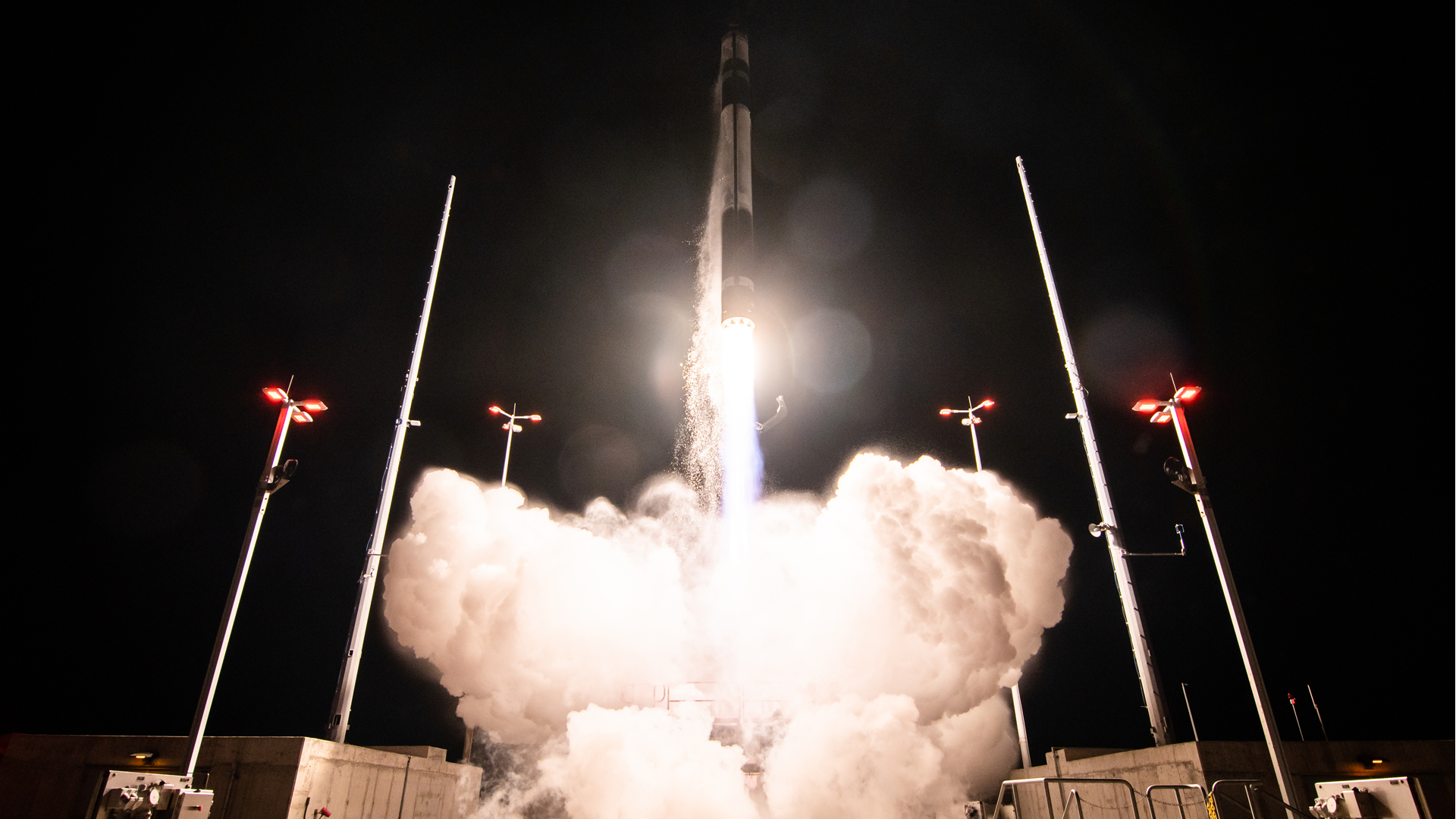
Rocket Lab is about to take a big step toward reusability.
The company announced today (April 19) that it plans to incorporate a used Rutherford engine in one of its Electron rockets, which will launch on a commercial mission later this year.
And success on that flight could pave the way for an even bigger milestone.
"Rocket Lab will assess the opportunities for flying a complete pre-flown first stage booster following the launch of the pre-flown Rutherford engine in the third quarter this year," company representatives wrote in an update today.
Related: Rocket Lab launches 1st Electron booster from US soil in twilight liftoff
The 59-foot-tall (18 meters) Electron can haul 660 pounds (300 kilograms) of payload to low Earth orbit. The rocket is powered by nine 3D-printed Rutherford engines in its first stage and one in its second stage. (Electron also features an upper "kick stage," which delivers satellites to precise orbits.)
Electron has flown more than 30 orbital missions to date, all of them in an expendable configuration. But Rocket Lab wants to make the vehicle's first stage reusable, and it's made strides toward that goal over the past few years.
For example, the company has recovered Electron boosters after six different orbital launches, then subjected the hardware to a variety of analyses and tests. This work suggests that reusability is a viable prospect going forward, Rocket Lab has said.
The engine that will make the company's first re-flight originally launched in May 2022, on a mission that Rocket Lab called "There and Back Again." The company managed to catch the falling booster with a helicopter shortly after liftoff on that occasion, though the pilots released it on purpose because they didn't like how the chopper was handling with its new load.
The helicopter snag had been Rocket Lab's go-to method of booster recovery. But analyses have shown that Electron first stages do just fine with parachute-aided ocean splashdowns, so the choppers will now be put on the back burner.
The company "is moving forward with marine operations as the primary method of recovering Electron for re-flight," Rocket Lab wrote in today's update.
"This is expected to take the number of Electron missions suitable for recovery from around 50% to between 60-70% of missions due to fewer weather constraints faced by marine recovery vs. mid-air capture, while also reducing costs associated with helicopter operations," they added.
This rocket-reuse update isn't the only news Rocket Lab has made recently. On Monday (April 17), for example, the company unveiled a new suborbital rocket called HASTE (short for "Hypersonic Accelerator Suborbital Test Electron").
As that name suggests, HASTE is derived from the Electron and will be used as a suborbital testbed for hypersonic vehicles.
"HASTE provides reliable, high-cadence flight test opportunities needed to advance hypersonic system technology development, with the inaugural launch scheduled to take place in the first half of 2023 for a confidential customer," Rocket Lab wrote in an update on Monday.
Mike Wall is the author of "Out There" (Grand Central Publishing, 2018; illustrated by Karl Tate), a book about the search for alien life. Follow him on Twitter @michaeldwall. Follow us on Twitter @Spacedotcom or on Facebook.







